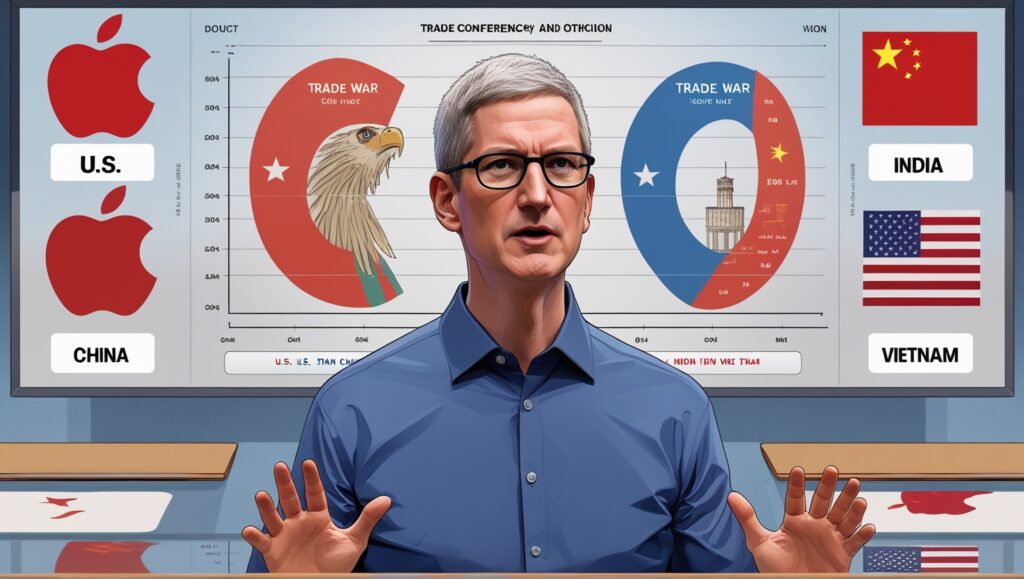
TL;DR
- Apple estimates $1.1B in tariff-related costs for Q3 2025.
- Previous quarter costs came in at $800M, down from a $900M estimate.
- Tariffs stem from IEEPA and new U.S.-China trade pacts.
- CEO Tim Cook credits iPhone sales growth to product strength, not tariff fears.
- Apple commits $500B to U.S. investments over four years.
Apple Faces Rising Tariff Pressures
Apple is bracing for $1.1 billion in tariff-related costs in the July-to-September quarter, up from the previous quarter, according to CEO Tim Cook’s statements on Apple’s earnings call Thursday.
While projections are based on current trade rules, Apple said these costs could ultimately land lower, just like in the June quarter when tariff costs totaled $800 million — down from the originally forecasted $900 million.
Cook stated the majority of these expenses are linked to tariffs under the International Emergency Economic Powers Act (IEEPA).
Context: U.S.-China Trade War Tariff Policy
The U.S. and China agreed earlier this year to a 30% tariff on Chinese imports, which includes Apple products. The trade pact also reduced some reciprocal tariffs from 125% to 10%, along with a 20% surcharge tied to fentanyl-related trade policy.
This temporary trade agreement remains in effect until August 12, 2025.
Although there was speculation that fears of tariffs might have driven early purchasing, Cook refuted the claim, saying:
“If you look at iPhone, the 16 family grew double digits, as opposed to the 15 family from the year-ago quarter… I think it directly is because of the strength of the product.”
iPhone Sales Dominate Q3 Earnings
Apple reported that iPhone sales surged 13% year-over-year, generating $44.5 billion in revenue. That represents nearly 50% of the company’s total Q3 revenue of $94 billion, according to Apple’s Q3 earnings report.
Despite growth, tariff costs continue to weigh on strategy.
Supply Chain Shifts & Manufacturing Risks
Apple devices are primarily assembled in India, China, and Vietnam:
- Nearly half of iPhones sold in the U.S. are made in India,
- Macs, iPads, and Watches bound for the U.S. come from Vietnam.
According to a recent supply chain disclosure, both India and Vietnam face tariffs of 25% and 20%, respectively.
In 2023, President Trump criticized Apple’s increasing reliance on India and warned of a 25% penalty unless production shifted back to the U.S. That threat still looms over Apple’s long-term plans.
Apple Responds with U.S. Investment Commitments
In response to ongoing policy pressure, Cook reaffirmed Apple’s U.S. commitment, stating the company will invest $500 billion over the next four years to:
- Build chip fabrication plants,
- Expand semiconductor R&D,
- Create U.S.-based production jobs.
This pledge follows Apple’s Made-in-America strategy.
The Data
| Metric | Value | Source |
| Q3 Tariff Cost Estimate | $1.1B | Apple Investor Call |
| Q2 Tariff Cost Actual | $800M | CNBC Report |
| iPhone Revenue | $44.5B | Apple Newsroom |
| U.S. Investment Commitment | $500B (2025–2029) | Apple Manufacturing Strategy |





